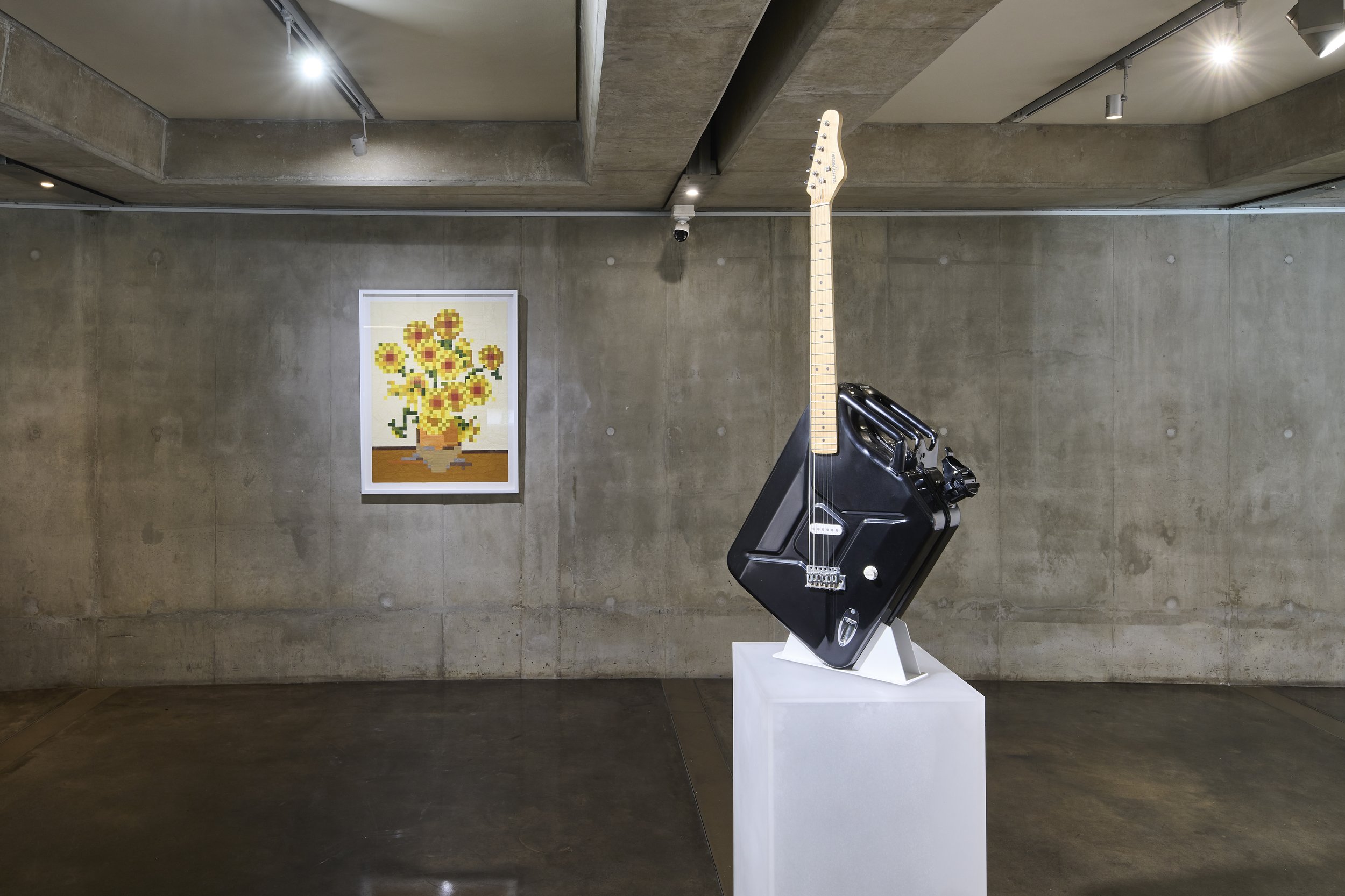Superstructure
A solo exhibition by Michael MacGarry
CIRCA Johannesburg
03 June – 25 July 2021

Square the circle
The 1987 film RoboCop was set in 2043 – the year I will turn 65, a traditional deadline for retirement from professional life. In 1990, I was 12 years old and apart from being largely unaware of the state of emergency boiling all around me in that autarkic circumstance called apartheid, I watched RoboCop repeatedly on VHS to the point that the magnetic tape snapped. I am not sure why I kept viewing this odd film, but I sense the effect is unfolding. The film's opening scene features a fictional news broadcast with a lead story on Pretoria as a city-state in 2043 threatening to use a French-made neutron bomb against political opponents to white-minority rule.
Given the kaleidoscopic vaudeville of lunacy in our present age, even a cursory glance at contemporary news feeds and the above broadcast almost reads as plausible within a context like the Korean peninsula. During the initial months of COVID-19 lockdowns I read international news feverishly – mostly in states of oscillation between boredom and dull terror in that slow apocalypse termed climate change. Through this process I learnt two key concepts; 1). humans are the strangest creatures currently living and 2). Doomscrolling – close relative to doomsurfing – which describes an excessive consumption of dystopian
news and information.
A trend I noticed, and that continues to eat away at me, is the now daily occurrence of news items that describe, in real time, the effects of the evolving climate crisis. It is every day now, and intelligent news sources appear to be increasingly taking on a role like some kind of punch-drunk Cassandra. The dominant narrative in my parent's lives at my age was apartheid, mine is that life on this planet – my own, my children's and the rest of the nearly eight billion of us – is set to change in ways we cannot imagine. Back in 1990, as I was binge watching RoboCop in the suburbs while South Africa tore itself apart, there were half that number of people on Earth. While I don't read the news as much now, and binge watching in the COVID-era has taken on new measures of endurance entirely – there is a sense in which this pandemic could simply be the amuse-bouche of an environmental end game in the second half of this century.
RIGHT:
Doomscroll
from: Tontine series
Salvaged cement packet paper, cotton
840 x 1 270 mm
ABOVE:
Endless branching pathways of binary logic
from: Tontine series
Salvaged cement packet paper, cotton, Warthog ivory
9 000 x 2 000 mm (800 x 500 mm each)
A series of national flags of fictional African countries as originally featured in Western media from the 1930s onwards.
In 1973, a computer program was developed at MIT to model global sustainability. Instead, it declared that by 2040 our civilisation would end. I have found another side effect of excessive media consumption during the lockdown periods to be a blurring of inputs – where all media, my own memories, extracts from books and even phone messages melt into each other, like some gloopy informational fondue. SUPERSTUCTURE is borne, in part, of a need to articulate those times I have personally experienced this; where I will be thinking of something and cannot tell for certain if this is a memory I have lived through, or if it is from somewhere else. By this I mean; a story told by a friend, a dream, something watched on television, read on my phone or consumed on any one of a hundred other sources of media. That uncanny feeling of not knowing with absolute certainty whether those thoughts and experiences are mine, or if they were put there? These haunt the sense of who I am, my identity disintegrates into random memories – absent of a structured narrative and devoid of meaning – stuck in circular time with neither the means nor desire to advance into the future. And there's also a downside! The invasion of such simulacra into the fabric of my life, makes patent the elusive and illusory nature of reality as both existential in character but also inherently political. I understand artmaking as a way out of these circular trenches through the processes of researching and writing stories. These narratives then manifest as sculptures, films and exhibitions.
SUPERSTUCTURE is interested in the power of fictions more broadly – both my own micro-narratives (at least what I assume are my own) and those at the macro societal level, the stories used to shape and maintain/maintain and shape, structure and control driven by the dual mythologies of human stability and sustainability. From the ideological construction of fragile nation-states under the legal fiction described as nationalism, to myths of policing, via the rise and fall of monuments and on to the cyclical historicity of ideas and ideologies – these are the stories we tell ourselves alloyed with those repeated from positions of market-obscured power all around us. We in turn, repeat these back to ourselves as hybrid dreams and nightmares. Such stories cannot tell us who we are but rather hint at who we could be, should be, must be if we aspire to be happy members of this human menagerie. Within this process, art or culture – whatever we call it – has long held a leading role in establishing the dominance of specific narratives and images of power designed to coerce, cajole and frighten for the benefit of those manning the marionette strings at any given time. It is this symbolic human noise that is the focus of my exhibition.
RIGHT:
All tomorrow's parties
from: Tontine series
Salvaged cement packet paper, cotton
1 050 x 1 560 mm





